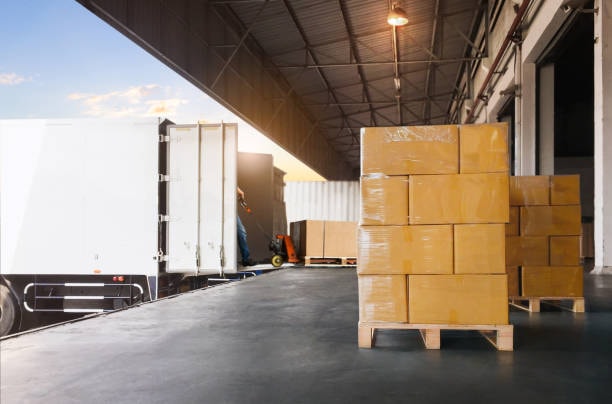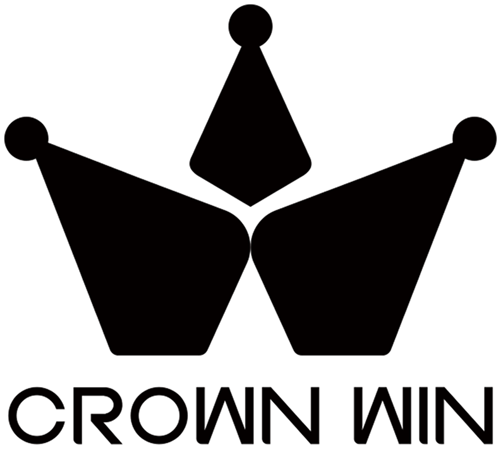
A thorough report on custom packaging for parts packaging in the automotive industry including materials, trends, eco-friendly packages and best practices that can help in the packaging of automotive components in transportation and storage in the year 2024.

The auto parts packing business has become a highly complex business realm that was valued in billions of dollars owing to the complex nature of contemporary cars and subsequent rise in the aftermarket parts. Since automotive makers and other suppliers are trying to use quality parts to the market safely and effectively then the automotive packaging solutions have become more important than ever. The guide is meant to provide a full spectrum of the current major tendencies, materials, and best practices in automotive parts packaging to manufactures, suppliers, and people involved in transportation and logistics.
The Growing Importance of Automotive Parts Packaging

The automotive manufacturing industry and parts packaging market have undergone such remarkable growth that the global automotive parts packaging market size is USD 9.39 billion in 2024 and the estimated CAGR in 2025-2030 is 4.5%. This growth process is in its turn an echo of the fact that modern vehicles are increasingly complex in terms of number of parts and components which include such delicate elements as the electronic sensors to such massive mechanical devices as the crank shaft.

New problems with packaging have emerged with the expansion of electricity-powered cars, driverless car systems, and the latest safety systems. These delicate parts will demand special attention in terms of challenges protection in transportation as well as in storage, and thus the packaging design currently takes the center stage. There is also the rise of e-commerce and direct-to-customer purchasing, which have led to more demand of packaging that holds up to the multiple logistics leg transport processes, carrying out products without damaging them.
Materials Revolution in Automotive Packaging

Plastic Packaging Dominance
The automotive parts protection has turned to rely heavily on plastic packaging plastic containers because of its unique set of things. The material will prove supreme in terms of impact resistance, chemical compatibility as well as moisture protection and would be suitable in protecting specific parts of sensitive vehicle parts. In contrast to the old forms of packaging (wood or metal), plastic package allows delivering the same level of protection but is always light and cheap.
Plastic is versatile and this enables the manufacture of products that manufacturers can mold accordingly to match with packages of different shaped components. This strength fit prevents any movements in the process of transportation, which contributes to cost savings by decreasing the chances of damage due to vibration and shock. Also, the ability of plastic to resist corrosion and chemicals makes it applicable in the areas or placement of the parts which may be subjected to automotive fluids or offered harsh environmental appurtenances during shipping automotive parts when combined with a volatile corrosion inhibitor.
Sustainable Material Innovations
It is because of environmental issues and regulation that the automotive industries are gradually adopting sustainable packaging materials that help reduce packaging waste . According to packaging experts, the examples of sustainable materials used in packaging that are catching up in the market are biodegradable plastic, recycled cardboard and containers that can be used repeatedly, ultimately benefiting the end user .
The bio-based plastics which are made of renewable resources also have protective characteristics similar to the traditional plastics but have a smaller impact on the environment. These substances decompose naturally at the expiry of their lifecycle and solve the problem of plastic waste build ups. In the same way, the recycled content packaging solutions oem solutions allow competing with the virgin material demands without the loss of protective capabilities.
Corrugated Packaging Renaissance
Due to the need of eco-friendly demand and where the cost of biodegradable plastics was involved, corrugated cardboard packaging has become attractive in distribution points the car industry. The corrugated products available currently have the better protective tools because of the intensified design and usage technology as well as the technology of treating the material.
Multi-wall corrugated structures offer great cushioning and shock absorbency and hence are suitable in cushioning the heavier automotive parts. The recyclability of the material and the renewability are in line with the sustainability objectives and the product has the cost benefit compared to the some of the plastic substitutes that help to reduce costs . Besides, corrugated packages are simple to print and provide branding factors, which serve business advertisements.
Reusable and Returnable Packaging Systems
A transition to the values of circular economy has ensured that reusable alternatives in terms of packaging grow considerably as well. On the basis of production and packaging type, reusable segment could claim more than 56 percent of the market revenue in the year 2024 and is projected to register the most rapid compound annual growth rate of 5 percent uptrend throughout the forecast period.
Returnable packaging reduces the cost both long-term and short-term as they negate the use of single containers thus reducing wastage of money. These systems will usually entail use with long lating plastic or metallic receptacles that are able to undergo several cycles of use and retain their protective qualities. The auto industry has even adopted the idea of using returnable packaging of returnable containers for high-volume parts, where the cost of logistics of getting returned is economical.
Cutting edge tracking systems such as RFID tags and GPS systems allow companies to trace their returnable packages through out their supply chain. It can be used to optimize the construction of assets and limit losses, which contribute to the transport efficiency and fixed arrival impressions of reusable packaging systems to an economic advantage..
Protection Against Transportation Hazards
Vibration and Shock Protection
The accessories of automobiles are exposed to myriads of dangers when on transit e.g. the never-ending motion by the engines of trucks, and vibration by the truck adventures and loading and unloading vibrations. Packaging of automotive parts also packaging for automotive parts helps to prevent serious vibrations, scuffs, dentations, ding, and damages to valuable vehicle parts that may occur during storage and shipping.
A good packaging design should cushion and support with firm structures to absorb and redistribute the forces on other non-sensitive parts. Barriers are formed between parts and packaging walls by foam inserts, air cushion and molded plastic supports to prevent direct contact. This is a multi-level protection system, which guarantees the service and sales preservation of even sensitive electronic elements over a long distance transportation.
Environmental Protection
Auto parts have to be shielded against such environmental exposures that may affect the shipment outcome of the parts in terms of performance or even cosmetics. The moisture, temperature, and exposure to chemicals may result in corrosion or dimensional changes and also in degradation of material. Packaging solutions mitigate these objections by use of barrier properties and controlled environment.
The packaging is moisture-resistant, and this ensures no water gets inside possibly causing rust or electrical failures. Temperature stable formulations has the benefit of remaining protective throughout the wide temperature ranges experienced in international shipping. There are barriers which are impervious to chemicals, such as fuel vapours, cleaning liquids and other automotive fluids.
Custom Design Solutions for Complex Components
Modular Packaging Systems
Automotive components are of numerous varieties that pose a challenge to packaging, in terms of support needed to support the component of a different size. The flexibility required to pack small sensors as well as large body panels at manufacturing plants with significant efficiency has been achieved by the use of modular packaging systems.
The most common characteristics of such systems include removable support elements, adjustable dividers and variable layout, that supports the packaging process and can be altered to accommodate different items. The flexibility eliminates the necessity to use a variety of types of packaging allowing to effectively protect each of the components. The modular designs also help in lean manufacturing beliefs due to reduction of inventory levels and storage capacity.
Precision-Fit Packaging
State-of-the-art manufacturing technologies make it possible to have the custom-fitted packaging that snugly fits component shapes. Automated manufacturing processes and computer-aided design guarantee good quality and maximum protection of complicated shapes.
Plastic packaging using thermoforming produces high accuracy at a cost effective price as small to large volumes are used. It produces packaging to be exact in their dimensions and characteristics that hold together components sufficient not to exert a great deal of pressure on them. This tight fastening prohibits excessive motion during transportation and all flaws of over-stressing.
Retail and Display Considerations
Clear Visibility Solutions
In the case of aftermarket parts that are distributed using retail outlets, the contention between packaging and its need to protect the good as well as provide product visibility is important. Consumers can check components inside packages without opening and this creates confidence in the quality of products and sales because the security of packages is not compromised through clear plastic packaging.
Transparent packaging solutions are made with materials that do not get scratched or cloudy, which guarantees clarity during whole supply chain. Anti-static techniques avoid dust deposition which may hamper the visibility of products. Further, transparent packaging allows effective visual check during quality checks.
Anti-Theft Features
In the retail setting, security risks are quite different and have to be handled with packaging. The parts of the car are also of a high value to be stolen, and thus the packaging design must allow taking the parts out not to be stolen, but still make it consumer friendly.
Blister packaged packages are highly secure as their tampering would instantly note. The fact that these packages are hard to open without inflicting visible damages on the package puts off casual theft and on the other hand it alerts retailers on possible security concerns. Also the see through nature of these packages can easily be verified with ease and still there is no security breach.
Smart Packaging Technologies
Sensor Integration
The use of sensors in packaging system is a great development in the protection of automotive parts. These intelligent packaging technologies track handling processes on the supply chain to monitor environmental conditions, impacts as well as confrontation.
Temperature probes prevent sensitive parts to pass out of bounds and shock probes provide warning of possible destructive shocks. It will help them achieve real-time monitoring which can be used to go into action when there are issues, minimizing the chances of the components being ruined and increasing the efficiency and reliability of the supply chain.
Tracking and Traceability
State of the art tracking technologies allow unbased visibility over the flow of packaging and components. GPS tracking systems, QR code, and RFID tags make it possible to monitor location in real time and automate the process of inventory.
These technologies facilitate regulatory compliance demands of chains of-custody record keeping. They also ensure that quality problems can be addressed quickly since it becomes easy to identify parts that are affected, and their position is known. The information gathered by the aid of these systems contributes to constant improvement programs through establishing trends in damage or loss.
Quality Assurance and Testing
Packaging Validation Methods
It must be noted that complete testing protocols need to be developed ensuring that the durability and the trouble-free transportation and storage are simulated. Drop tests, vibration testing, and environmental conditioning ensure that the packaging solutions used are sufficient to protect packaging, in different situations.
Accelerated aging In accelerated aging tests, long-term performance is predicted and failure modes prevented before they can happen in the service. The tests put packaging through harsh conditions that suppose months and years of regular use in accelerated time. The outcomes inform the decision about the design improvements and the choice of materials.
Compliance Standards
The cars business is strictly controlled by quality and safety norms which are applied to packaging. The ISO 9001 quality management systems have quality performance securities by posing a consistent performance in the package and the industry specific standards have their specific performance securities which relate to the automotive components.
To satisfy the requirements of these standards, documented procedures must be in place, there must exist periodic audits and process of continuous improvement. To comply with these requirements, packaging suppliers have to prove that they are able to do so for their clients with help of certification programs and constant checks of their performance.
Sustainability and Environmental Impact
Circular Economy Principles
Auto industry is also moving towards the circular economy model that focuses on reusing, recycling, and waste minimization. Packaging is also a key element of such initiatives as it helps to reduce the consumption of materials used and bulk up recovery.
Recyclability is property that reaffirms that the materials used to package are expected to process well when the packaging reaches end-of-life so that it goes to landfills and does not play an effective role in material recovery. The packaging designers would mind the kind of material they use, additions they make, and how to avoid contamination to ensure that the recycling potential can be exploited to the maximum.
Carbon Footprint Reduction
The environmental consequences of transportation emissions constitute a high percentage in packaging. Packagings made with lighter materials conserve fuel during transportation and ideal designs minimize on the package space and the loading process enhances efficiency on the load.
Having the materials that are used in packaging locally would minimize the transport distances and emission. Also, when it comes to manufacturing packaging, renewable energy also results in reduced carbon footprint. These initiatives will fulfill the sustainability objectives of the automotive manufacturers and they may also save costs.
Future Trends and Innovations
Automation and Robotics
The supplement of the automation and robotics in the processes of packaging is shifting the industry. Automated packaging systems have the benefit of enhancing consistency, lowering the cost of labour and making it possible to achieve operational capacity 24/7.
Robotic packaging systems have the ability to work with complex geometry and fragile parts in a more precise way than it is possible using human labor. These systems can also capture more information on the packaging operations and they can be optimized continuously and improved in terms of quality.
Advanced Materials Development
Developments in automotive packaging remain the innovation in research into new materials. The nanocomposite materials present superior barrier property and mechanical strength besides their being lightweight.
Adaptive protection is given by use of smart materials that respond to environmental conditions. Such materials are the next step of packaging materials due to which the protection of the components will be enhanced and environmental impact will be diminished.
Cost Optimization Strategies
Total Cost of Ownership Analysis
Such packaging decisions should be based on the total cost of ownership as opposed to the initial cost of the material used. The above analysis factors in prevention of damages, consumption efficiency of handling, storage necessities, and end of life disposal.
Avoidance of losses of the components due to good packaging amounts to huge savings which far outweigh the cost of packaging. Besides, supplying packaging that is cost efficient in terms of labor and cycle time efficiency also across the supply chain.
Supply Chain Integration
A cost-effective way to perform operations is through integration of packaging design and supply chain activities. Selection of packaging which gives maximum efficiency in handling machinery in the warehouse also cut down on operational expenses.
Cooperation between suppliers of packaging products and automakers allows constant improvement and innovation. These alliances make use of the strengths of both partners in the creation of the best solutions that have taken into consideration cost, performance, and sustainability.
Conclusion
With the change in market demands, and environment related issues and the growth in technologies classical automotive parts packaging industry is bound to undergo changes as well. The development of the automotive industry can be seen in the light of growing significance of the efficient packaging as the means of protection of valuable automotive parts during shipping and advancing the efficiency and sustainability principles of the supply chains.
In this dynamic market success can only be achieved through a complete knowledge of materials, technologies and the best practices. Automakers which invest in new packaging solutions, support the principles of sustainability, and use advanced technologies will have perfect chances to compete in the rival automotive environment.






